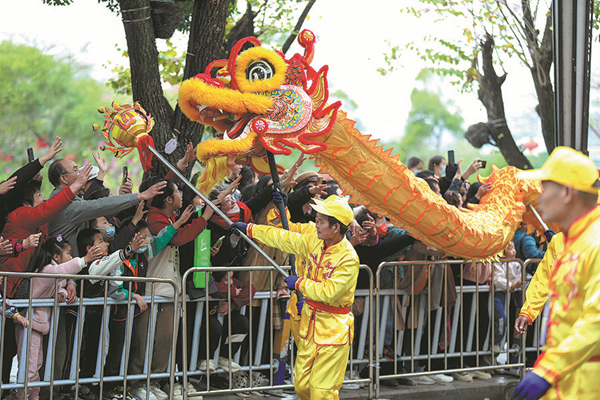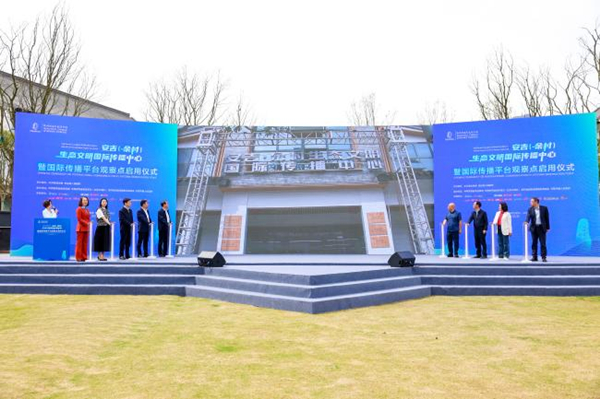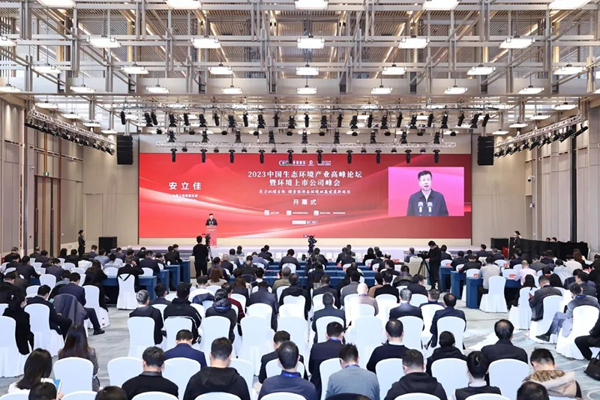Dragon dances fire up enthusiasm

Dragon dance performers interact with spectators at a grand parade in Huizhou during the Lantern Festival on Feb 24. [Photo provided to China Daily]
Traditional art form continues to arouse passion and appreciation for its exquisite craftsmanship and skill, Yang Feiyue reports.
The Year of the Dragon has breathed extra vigor into the rich heritage of dragon dances across the country. The art form can trace its origins back to ancient sacrificial rituals, as depicted by Dong Zhongshu, a prominent Han Dynasty (206 BC-AD 220) intellectual and influential politician, in his work Chunqiu Fanlu (Luxuriant Dew of the Spring and Autumn Annals) that dragon dances were performed to pray for rain.
With the rising popularity of various folk dramas, dragon dances gradually evolved from temple rituals to folk customs to give thanks for good fortune.
Over time, the dance has further splintered into performances carrying distinctive local characteristics and adds drama and excitement to modern celebrations.
Zhang Fanshen led a team in a performance of Banban Dragon Lantern, a national intangible cultural heritage, in Cili county, Zhangjiajie, Central China's Hunan province, on Friday, International Women's Day.
"We had dance moves to create a formation of auspicious Chinese characters," says Zhang, who has practiced the dragon dance for several decades.
The dragon was adorned with bright lights on its head, and its long body was made up of several wooden boards — each affixed with some diamond-shaped colorful lanterns — while the dragon tail was decorated with auspicious fish patterns. "This symbolizes abundant harvests and national prosperity," says Zhang, who is also vice-president of the county's Banban dragon lantern association.
Originating in Cili, where various types of mulberry trees have been cultivated for silkworms, people perform dragon dances to pray for favorable weather in the region. Dragons are made with material related to their trade — lanterns, for instance, are crafted from silk.
"The making of props for the dragon dance requires exquisite bamboo weaving, woodworking, and painting skills," he says.
The dragon's head is tall and majestic, while the body usually consists of dozens, or possibly hundreds, of individual wooden boards.
"Through close cooperation between individuals and the use of linear and chain formations, various exquisite patterns are delivered through dancing," Zhang says.
To date, Zhang's association has attracted more than 1,100 performers from villages in the county, and training sessions have been staged at schools, he adds.
Fiery glamour
In Chongqing, Cai Mingcan is ready for the big performance on eryue'er, the second day of the second Chinese lunar month, also known as longtaitou, or Dragon Head Raising Day. It falls on Monday.
People in ancient times observed a special celestial phenomenon, which they described as resembling a dragon raising its head. After this day, ancient people believed that the rain-bringing Dragon King was awakened from its winter sleep. The day has since been celebrated as a festival.
"We will make a point of delivering a move that shows the dragon raising its head," says Cai, who has been preserving and updating Tongliang dragon dance, also a national intangible cultural heritage, for three decades.
The Tongliang dragon dance dates back to the Sui (581-618) and Tang (618-907) dynasties, when people prayed for rain by worshipping the dragon kings of Chinese mythology, who take command of the seas and control the weather. During the Ming (1368-1644) and Qing (1644-1911) dynasties, the ritual evolved into a folk activity.
The dance has stood the test of time and remained popular, as it has come to represent profound significance in the contemporary era, embodying felicity, power and bravery, Cai says.
So far, there are about 100 types of dragon dance in Tongliang district, and Cai's troupe, consisting of more than 50 young performers, has been able to deliver shows in accordance with the 24 solar terms, including the bamboo dragon show in spring, the lotus dragon show in summer, the straw dragon show in autumn and the fire dragon show in winter.
Particularly, the multiple fire dragon shows they gave last month triggered thunderous applause from their audiences, as sparks flew all around the soaring dragons being carried by the crew, recalls Li Yihuan, a 21-year-old man who has been performing the dance since he was 16.
Li has become accustomed to his teammates hurling molten iron into the night sky, resembling scattered iron flowers or stars falling like rain.
"The key is to overcome the fear and perform with enough courage, so the fiery dragon can be presented with agility," Li says.
To date, the Tongliang dragon dance has made its way to more than 30 countries and regions, including the United States, France and Australia.
"We have received more invitations for the Year of the Dragon," Cai says, adding that the performance schedule now extends to December.
Birth from lotus flowers
At the main venue of the Dancing with the Chinese Dragons parade hosted in Huizhou city, South China's Guangdong province, on the recent Lantern Festival, which fell on Feb 24, the Baiye dragon dance stood out among 50 such performances of various styles from around the country.
The Baiye dragon performance, which first emerged in Changxing county, Huzhou, Zhejiang province, was a refreshing sight for the audience with the swinging of props resembling lotus leaves, blooming flowers, and the fluttering of colorful butterflies. Just as the audience was wondering the whereabouts of the dragon, it emerged from the lotus flowers.
The 10-second assembly and entrance of a long dragon from the petals and leaves is the result of folk wisdom that has been passed down for over 200 years, says Gu Yue, deputy head of the Baiye dragon troupe.
It usually takes a month to create such a dragon, with over 130 processes, involving more than 80 different materials.
The lotus flowers are usually divided into nine sections and connected with iron hooks. During the performance, meticulous staging and rapid assembly are required to achieve the clever transformation from lotus flowers to the long dragon.
It usually takes years of practice for a performer to get the whole thing down to such a fine art, from playing supporting roles, such as lotus flowers and leaves, to leading as the dragon body, tail, and head, according to Gu, who has performed the dance for more than two decades.
"You might master the basics in two months, but to grasp the essence needs at least two years," Gu says, adding that the dragon head alone weighs 5 kilograms and controlling it is a demanding task for the performer.
The Baiye dragon dance has stamped a route to grand occasions, including the opening ceremony of the 19th Asian Games in Hangzhou, Zhejiang, and the China International Import Expo in Shanghai last year. It has also represented Zhejiang in international cultural events, including those in Russia, New Zealand, France and South Korea.
Gu reminisces about the diverse dragon dance forms he witnessed at the Huizhou parade, which consisted of 18 dragon shows that have been granted national intangible cultural heritage status and a performance from Hong Kong and Macao, respectively, complemented by 31 provincial intangible cultural performances from Guangdong.
"It speaks volumes about the country's rich heritage of dragon dances," he says.
More than 1,200 performers joined the parade along a 3.6-kilometer route, attracting more than 150,000 onlookers. More than 18 million people watched the parade online. The event was co-hosted by the intangible cultural heritage department of the Ministry of Culture and Tourism, the Guangdong provincial culture and tourism bureau and the Huizhou government, and aimed to create a festive atmosphere to celebrate the Chinese New Year and strengthen the promotion, interpretation and inheritance of traditional Chinese culture.
Venezuelan vlogger Rafael Saavedra got a good understanding of the festivities during the parade.
"Seeing teams from different provinces, I feel the diversity and fascination of Chinese culture," says Saavedra, who now lives in Shenzhen, Guangdong.
"I've fallen in love with the profound and vast traditional culture of China, and this is what I want to share with other countries around the world," he says.





